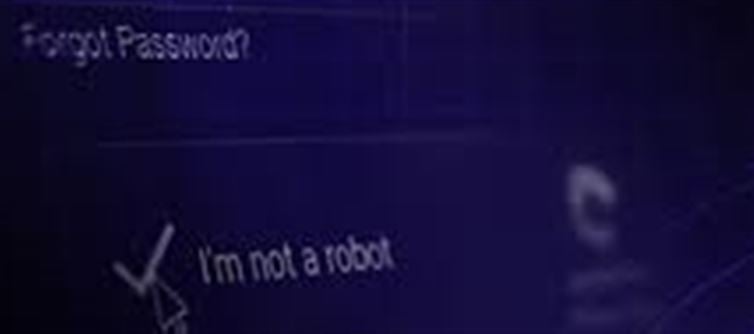
In the ever-evolving world of cybersecurity, cybercriminals are constantly finding new ways to deceive users and steal sensitive information. One alarming trend that has emerged is the use of AI-powered phishing attacks involving fake CAPTCHA pages. These attacks are designed to trick you into revealing your personal details, including passwords, by mimicking legitimate online verification processes. Here’s what you need to know to stay safe:
1. What Is CAPTCHA, and Why Is It Important?
CAPTCHA (Completely Automated Public Turing test to tell Computers and Humans Apart) is a security measure commonly used on websites to ensure that a user is a human and not a bot. It typically involves solving puzzles like:
· Identifying objects in images
· Typing distorted text
· Clicking on specific areas in images
While CAPTCHA is designed to protect against bots, cybercriminals are now misusing this tool to conduct phishing attacks.
2. How AI is Being Used in Fake CAPTCHA Attacks
Cybercriminals have found a way to use AI to replicate CAPTCHA pages and trick users into entering sensitive information. Here’s how they’re doing it:
· AI-Generated Fake CAPTCHA Pages: AI is being used to create highly convincing fake CAPTCHA pages that look identical to the real ones you encounter on legitimate websites.
· Deceptive Design: The AI tools can generate realistic looking CAPTCHA forms, tricking users into believing they’re interacting with a trusted source.
· Data Harvesting: Once users enter their information to pass the CAPTCHA, the cybercriminals behind the attack steal passwords, login credentials, and other personal data.
3. What Makes AI-Powered CAPTCHA Attacks So Dangerous?
· Increased Credibility: Unlike traditional phishing attempts, AI-generated fake CAPTCHAs can appear almost identical to the real thing, making it difficult for users to differentiate.
· Automated Attacks: AI can automate the process of generating multiple fake CAPTCHA pages, allowing cybercriminals to launch large-scale attacks on a variety of websites at once.
· Targeting Specific Users: With AI’s data analysis capabilities, attackers can target specific individuals or groups more effectively by analyzing user behavior and tailoring attacks accordingly.
4. Signs That a CAPTCHA Could Be Fake
There are a few red flags that can help you recognize if a CAPTCHA page is fake:
· Strange Website URL: Always verify the URL of the website you’re on. Look for any suspicious or unusual domain names that could indicate a phishing site.
· Unusual CAPTCHA Format: While CAPTCHAs come in different forms, they should always be simple and familiar. If the CAPTCHA looks out of place or overly complex, it could be a fake.
· Request for Sensitive Information: Legitimate CAPTCHA forms will never ask you to provide passwords, personal identification numbers (PINs), or financial details.
· Poor Web Design: If the CAPTCHA page seems low-quality or has any odd formatting or images, it could be a sign of a phishing attempt.
5. How to Protect Yourself from AI-Driven CAPTCHA Phishing Attacks
To stay safe from these AI-powered phishing attempts, follow these essential security measures:
· Be Skeptical: Always be cautious when entering personal information online, especially on unfamiliar websites. If a CAPTCHA asks for anything beyond basic verification, it’s likely a phishing attempt.
· Check the URL Carefully: Before entering any data, double-check the URL to make sure you're on the official site. Cybercriminals often use similar-looking domains to trick users.
· Use Two-Factor Authentication (2FA): Whenever possible, enable 2FA on your accounts to add an extra layer of protection.
· Update Your Passwords Regularly: Make sure your passwords are strong and unique for each account, and change them regularly.
· Use Anti-Phishing Software: Install a reputable anti-phishing tool or browser extension to help identify suspicious websites and block phishing attempts in real time.
· Educate Yourself on AI-Driven Threats: Stay informed about the latest cyber threats, especially those involving AI. The more you know, the better prepared you’ll be to recognize and avoid scams.
6. Final Thoughts: Stay Vigilant
As AI technology becomes more advanced, cybercriminals will continue to exploit it for malicious purposes. The rise of AI-powered fake CAPTCHA attacks is just one example of how the online threat landscape is evolving. By staying vigilant, verifying websites, and using the proper security measures, you can significantly reduce your risk of falling victim to these sophisticated phishing attacks.
Remember: If you ever feel uncertain about a CAPTCHA or a page’s legitimacy, it’s better to exit the site and verify its authenticity before proc
Disclaimer:
The views and opinions expressed in this article are those of the author and do not necessarily reflect the official policy or position of any agency, organization, employer, or company. All information provided is for general informational purposes only. While every effort has been made to ensure accuracy, we make no representations or warranties of any kind, express or implied, about the completeness, reliability, or suitability of the information contained herein. Readers are advised to verify facts and seek professional advice where necessary. Any reliance placed on such information is strictly at the reader’s own risk..jpg)




 click and follow Indiaherald WhatsApp channel
click and follow Indiaherald WhatsApp channel